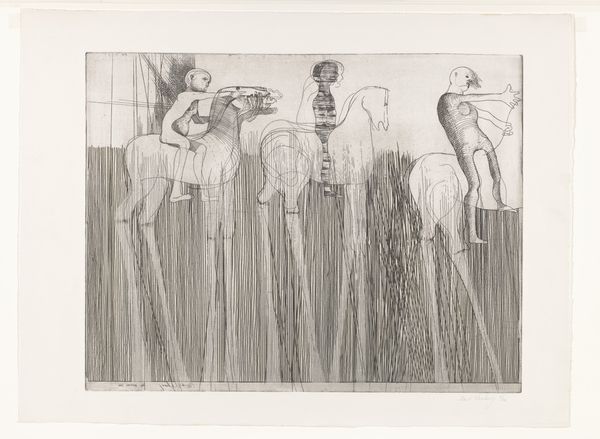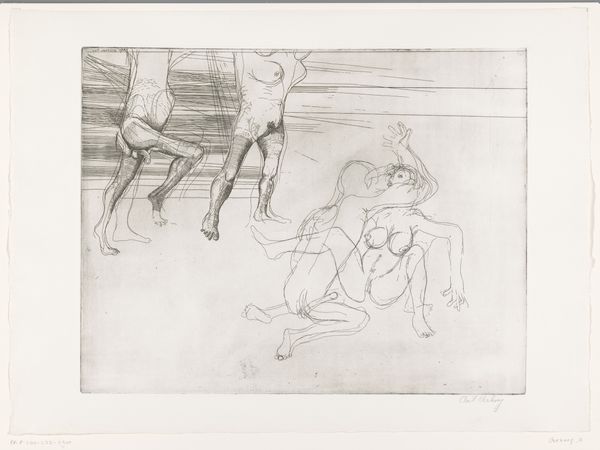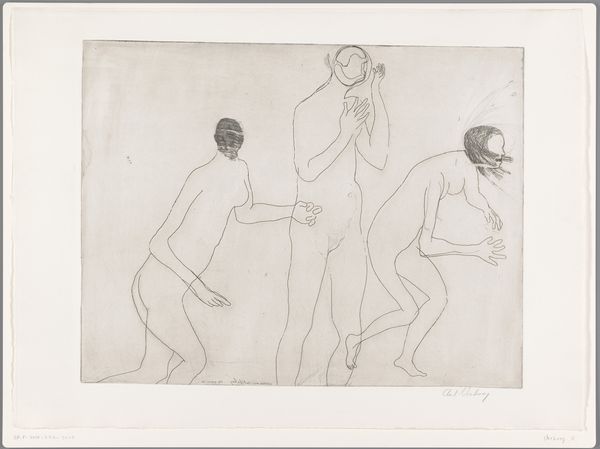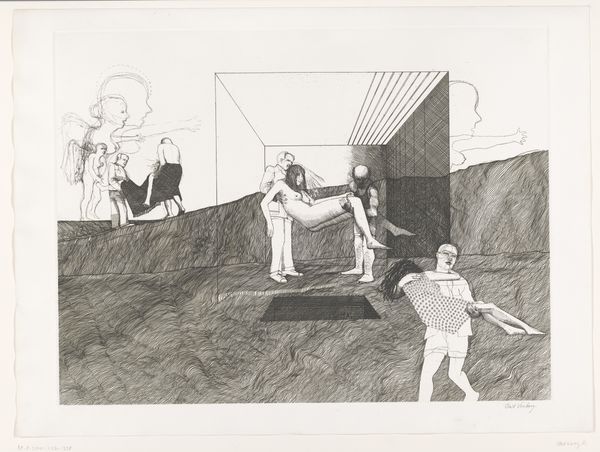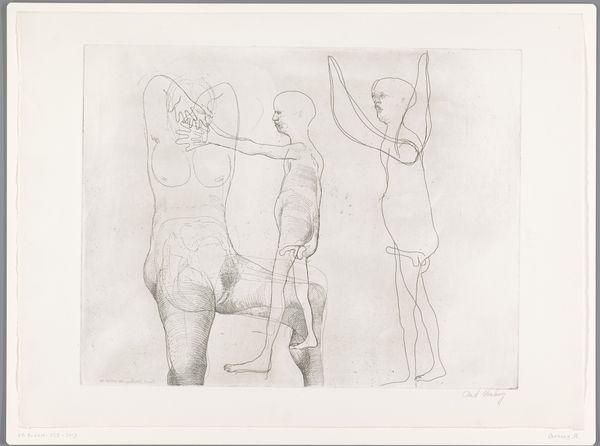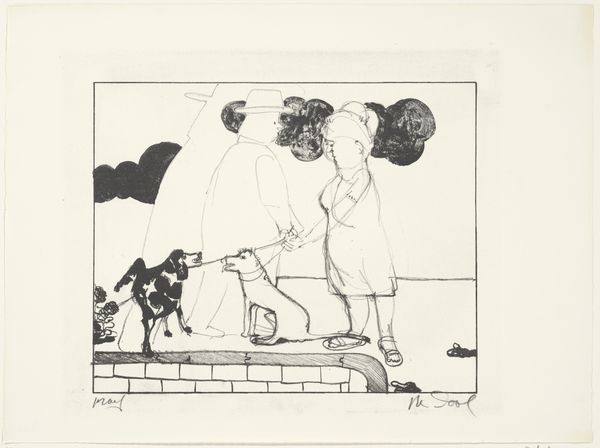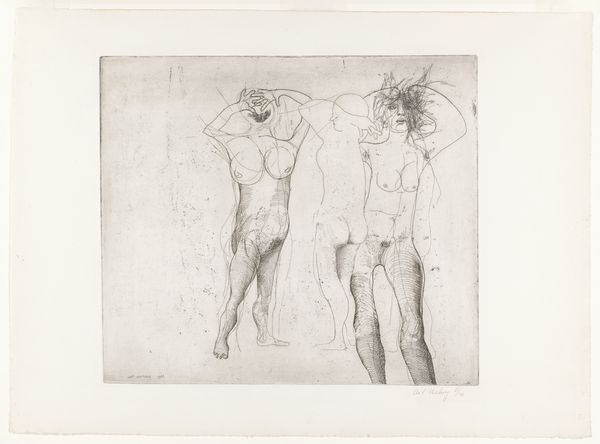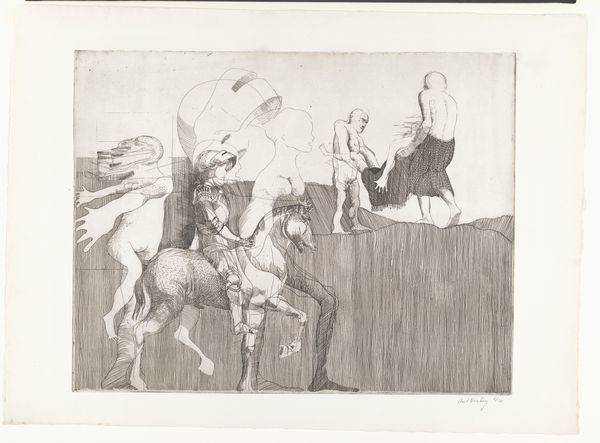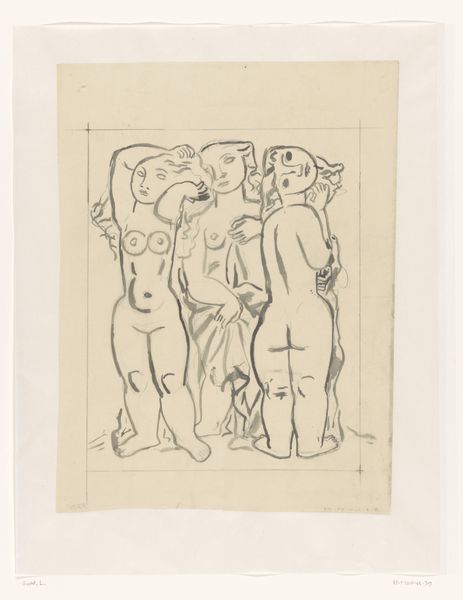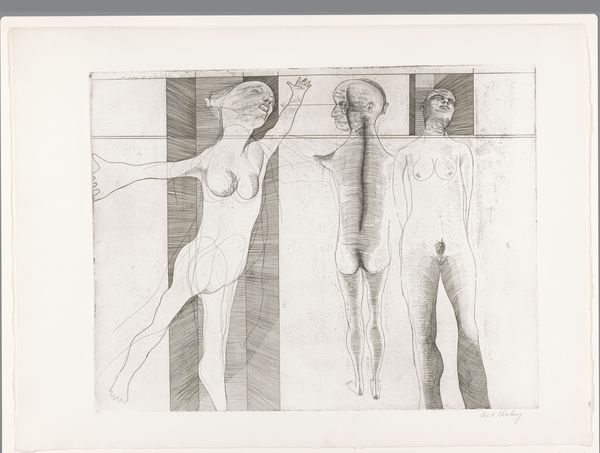
print, linocut, etching
#
narrative-art
# print
#
linocut
#
etching
#
figuration
#
linocut print
#
geometric
#
nude
#
monochrome
Dimensions: height 563 mm, width 770 mm, height 440 mm, width 498 mm
Copyright: Rijks Museum: Open Domain
Curator: Standing before us is Aat Verhoog’s "Three Nudes and Rider," a 1966 etching and linocut print residing here at the Rijksmuseum. Editor: My immediate response is… uneasy. The stark monochrome and almost skeletal rendering of the figures evokes a sense of anxiety. There's a fractured, dreamlike quality, isn't there? Curator: Verhoog was grappling with the anxieties of postwar Europe, I think. There was this looming tension permeating Dutch society. The starkness is very intentional – it is the legacy and lingering shadow of World War II on the Dutch psyche, the anxieties related to reconstruction, the Cold War, and rapid social change. Editor: Right, I see. Formally, the layering is fascinating. The transparent figures create depth without clear spatial logic. Did Verhoog explore those new possibilities in abstraction? Curator: Absolutely. But Verhoog was walking a tightrope. He needed to move forward and grapple with modernity, but figuration has very strong historical associations. Remember that immediately following WWII, any kind of purely aesthetic experimentation was heavily scrutinized – it was associated with moral bankruptcy. Editor: Hmm. So it's a negotiation then, a tension between representation and the more subjective expression afforded by abstraction. That line work...the nervous energy in it. Is it just me, or do the fragmented figures, particularly the rider, almost seem to be escaping from something? Curator: A perceptive reading! The nude as an artistic subject experienced a strong resurgence during the 1960s in the Netherlands, reflecting changing social norms and ideas about liberation, or an urge to free itself from convention. It's not simply the depiction of bodies; it is symbolic of larger social movements and this tension with more conservative cultural constraints. Editor: Looking closely, I wonder about the textures achieved through the linocut combined with etching. There's a deliberate roughness that fights against a smooth, classically rendered nude. The formal components thus echo that friction we were talking about. Curator: I think it underscores the artist’s interest in mirroring a society in conflict and transition; this period in Dutch history reflects the kind of raw emotions you’re getting from Verhoog's manipulation of form and material. Editor: It's incredible how a seemingly simple print can hold so much layered meaning. Curator: Indeed. "Three Nudes and Rider" is a subtle reminder that art often holds a mirror up to society, reflecting both its beauty and its anxieties.
Comments
No comments
Be the first to comment and join the conversation on the ultimate creative platform.
